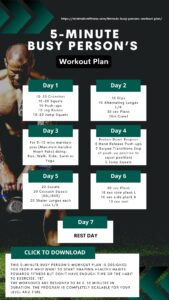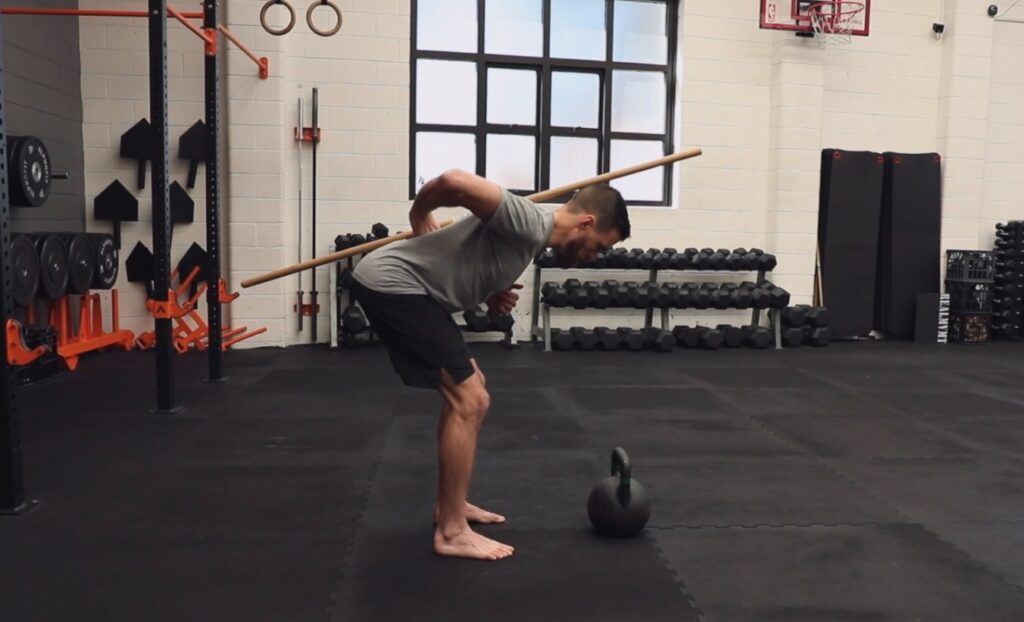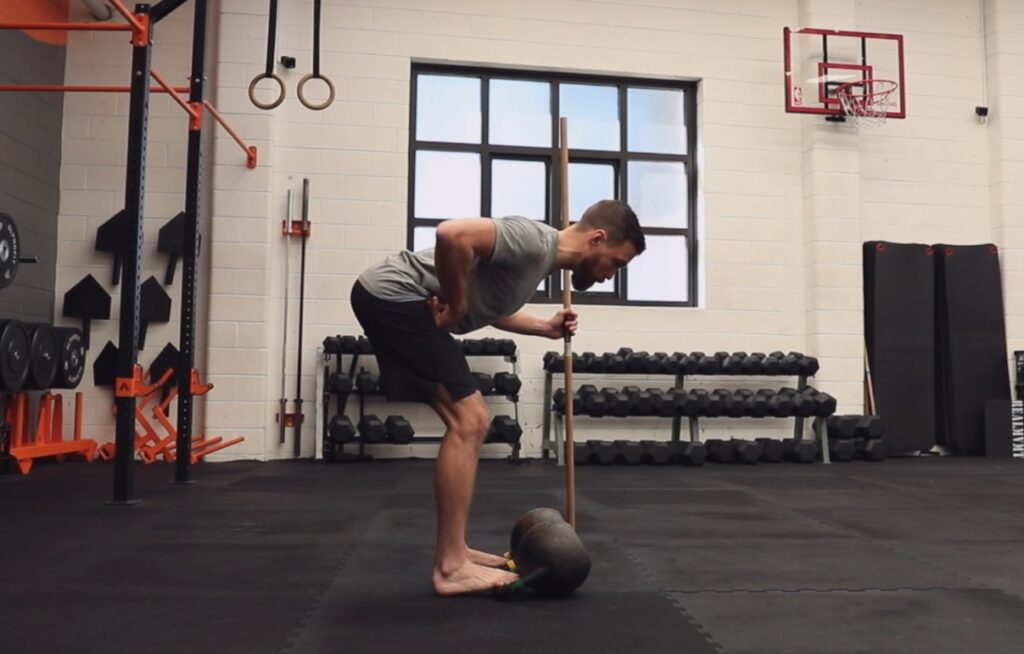In this article, we will explore the hip hinge, the importance of proper form, common mistakes and corrections and common hip hinge exercises. We will also discuss the muscles involved in the movement and provide tips for improving hip hinge technique. By the end of this article, readers will have a comprehensive understanding of the hip hinge and how to perform it safely and effectively.
Key Takeaways
- The hip hinge is a fundamental movement pattern that involves bending at the hips while maintaining a neutral spine which is different to the squat movement
- Proper form is essential for preventing injury and improving performance.
- The hip hinge engages the glutes, hamstrings, and lower back muscles, making it an effective exercise for strengthening these areas and the posterior chain.
Understanding Hip Hinge Movement
The hip hinge is a hip dominant movement. This varies to the squat pattern as the squat is a knee dominant movement. During the hinge movement, the shins remain vertical and the hips do not go below the knee.

Hip Hinge Exercises
Hip hinge exercises are a great way to strengthen the posterior chain, which includes the glutes, hamstrings, and lower back. These exercises can be done with a variety of equipment, including barbells, kettlebells, and dumbbells.
Romanian Deadlift
One popular hip hinge exercise is the Romanian deadlift (RDL). To perform this exercise, stand with your feet shoulder-width apart and hold a barbell or dumbbells in front of your thighs. Hinge at the hips and lower the weight towards the ground, keeping your back straight and your knees slightly bent. Return to the starting position by contracting your glutes and hamstrings.
Kettlebell Swing
Another effective hip hinge exercise is the kettlebell swing. This exercise involves swinging a kettlebell between your legs and then explosively driving your hips forward to propel the weight upwards. The swing targets the glutes, hamstrings, and core.
Nordic Curl
The nordic curl is a challenging posterior chain exercise that targets the hamstrings. To perform this exercise, kneel on a mat with your feet secured under a bar or bench. Slowly lower your upper body towards the ground, keeping your hips extended and your back straight. Use your hamstrings to raise your body back up to the starting position.
Incorporating hip hinge exercises into your workout routine can help improve your overall strength and performance. Make sure to choose the right equipment and weight for your fitness level and always maintain proper form to avoid injury.
Related Posts:
- Nordic Curls: Mastering The Ultimate Exercise For Hamstring Strength
- RDL vs Deadlifts – 2 Posterior Chain Exercises You Must Master
- How To Master Proper Kettlebell Swing Form With These 6 Steps
Advanced Hip Hinge Variations
Advanced hip hinge variations are essential to take your training to the next level. These exercises focus on increasing strength, power, and explosiveness while improving flexibility and mobility. The following exercises are some of the best hip hinge variations that you can incorporate into your training regimen.
Kettlebell Clean
The kettlebell clean is a compound exercise that targets the entire body, including the hips, glutes, and lower back. It is an excellent exercise for developing power, explosiveness, and athleticism. The kettlebell clean can be done with a single or double kettlebell which also adds an element of stability training within the movement.
Kettlebell Snatch
The snatch is a full-body exercise that targets the hips, glutes, and lower back. It is an explosive exercise that develops power, speed, and coordination. Once again, the movement can be done with single or double kettlebells.
Trap Bar Deadlift
The trap bar deadlift is a variation of the conventional deadlift that targets the hips, glutes, and lower back. It is an excellent exercise for developing strength and power in the posterior chain while reducing stress on the lower back. To perform this exercise, stand inside a trap bar with your feet hip-width apart, grab the handles, and lift the bar off the ground. Keep your back straight and hinge at the hips, lowering the bar towards the ground. Pause when you feel a stretch in your hamstrings, and then return to the starting position.
Incorporating these advanced hip hinge variations into your training regimen can help you develop strength, power, and explosiveness while improving mobility and flexibility. However, it is essential to perform these exercises with proper form and technique to avoid injury.
Related Posts:
- Learn the kettlebell clean | The Definitive 6 step Guide
- Master the kettlebell snatch in 5 steps
- 28 Kettlebell Exercises You Must Master
Get Fit in 5 Minutes

Too Busy to Work Out?
In 5 minutes a day, you’ll create an easy-to-follow workout habit that fits your busy schedule.
Muscles Involved
During a hip hinge movement, several muscles in the posterior chain are activated to produce the desired motion. The main muscles involved in a hip hinge are the glutes, hamstrings, low back, and core.
Glutes
The glutes are a group of muscles located in the buttocks region. They are responsible for hip extension and play a significant role in a hip hinge movement. The gluteus maximus, the largest muscle in the glute group, is the primary muscle involved in hip extension during a hip hinge. The gluteus medius and minimus also play a role in stabilizing the pelvis during the movement.
Hamstrings
The hamstrings are a group of muscles located at the back of the thigh. They are responsible for knee flexion and hip extension. During a hip hinge, the hamstrings work with the glutes to extend the hip joint. The biceps femoris, semitendinosus, and semimembranosus are the three muscles that make up the hamstrings group.
Lower Back
The lower back muscles, also known as erector spinae, are a group of muscles that run along the spine. They help maintain an upright posture and play a significant role in a hip hinge movement. During a hip hinge, the erector spinae muscles contract to keep the spine in a neutral position and prevent excessive flexion.
Core
The core muscles, including the rectus abdominis, transverse abdominis, and obliques, play a crucial role in stabilizing the spine during a hip hinge. They work together to maintain a neutral spine and prevent excessive flexion or extension during the movement.
How to Hinge
To perform a hip hinge, one needs to start by standing with their feet shoulder-width apart. The individual then needs to push their hips back while having a “soft bend” in their knees. The movement should be initiated by hinging at the hips, with the pelvis tilting forward, and the spine remaining in a neutral position.
Maintaining correct posture is crucial when performing a hip hinge. This involves keeping the shoulders back and down, chest lifted, and hips level in order to maintain the neutral spine we talk about. This helps prevent rounding of the shoulders and upper back, which can lead to strain and discomfort or potential injuries.
Importance of Form
When performing the hinge, proper form is essential to prevent injury and maximize the benefits of the exercise. Poor form can lead to back pain and other injuries, which can be avoided by maintaining a neutral spine and correct posture throughout the movement.
Hamstring mobility is also essential in performing a proper hinge movement. Limited hamstring mobility can lead to compensations in other areas of the body, such as the lower back. By improving hip mobility, individuals can perform a hip hinge with better form and reduce the risk of injury.
To improve your hamstring mobility for the hip hinge, check out this video:
Related Posts:
Common Mistakes and Corrections
When it comes to performing a hip hinge, there are a few common mistakes that people tend to make. These mistakes can lead to injury and prevent the individual from getting the most out of their exercise routine. Here are some of the most common mistakes, how to correct them and a video with some handy drills:
Mistake: Rounding the Back
One of the most common mistakes that people make when performing a hip hinge is rounding their back. This can put a lot of stress on the spine and lead to injury. To correct this, the individual should focus on maintaining a neutral spine position throughout the movement. This means keeping the back straight and avoiding any rounding or arching.
Using a dowel or broomstick down the centre of the back whilst completing the hing will help you maintain a neutral spine and increase your range of motion throughout the movement.

Mistake: Using the Lower Back Instead of the Hips
Another common mistake is using the lower back instead of the hips to initiate the movement. This can also put a lot of stress on the spine and lead to injury. To correct this, the individual should focus on engaging the glutes and hamstrings to initiate the movement. This will help take the pressure off the lower back and distribute it more evenly throughout the body.
Mistake: Not Keeping the Knees Slightly Bent or “Shins Vertical”
Some people make the mistake of locking out their knees during the movement. This can put a lot of stress on the lower back and prevent the individual from getting the most out of the exercise. To correct this, the individual should keep their knees slightly bent or “soft” throughout the movement.
Different to the squat movement, the hips are the main mover where the shin ideally stays vertical, which restricts the bend in the knee. Raising your toes onto a barbell plate or kettlebells will help you maintain the vertical shin position.

Mistake: Not Keeping the Core Engaged
Finally, some people make the mistake of not keeping their core engaged during the movement. This can lead to poor posture and prevent the individual from getting the most out of the exercise. To correct this, the individual should focus on keeping their core engaged throughout the movement. This will help maintain proper form and prevent injury.
Overall, by avoiding these common mistakes and focusing on proper form, individuals can get the most out of their hip hinge exercise routine while minimizing the risk of injury.
Conclusion
The hip hinge is an important movement pattern that should be incorporated into strength training programs to improve athletic performance and prevent injuries. By emphasizing the use of the hip joint, the hip hinge allows for greater recruitment of the posterior chain muscles, including the glutes, hamstrings, and lower back.
Strength training exercises such as deadlifts, kettlebell swings, and Romanian deadlifts are effective ways to train the hip hinge pattern and improve overall strength and power. Additionally, incorporating hip hinge exercises into warm-up routines can help improve flexibility and mobility in the hips and lower back.
When performed correctly, the hip hinge can also help prevent injuries by teaching individuals how to properly lift and move heavy objects without placing unnecessary stress on the lower back. This is particularly important for individuals who engage in activities that require frequent lifting, such as manual labor jobs or sports that involve jumping and running.
Frequently Asked Questions
What is the difference between the hip hinge and squat?
Different to the squat movement, the hips are the main mover where the shin ideally stays vertical, which restricts the bend in the knee. The hips also will stay above the knee where in a squat, they will go lower to achieve the right depth.
What muscles are used during a hip hinge exercise?
The hip hinge exercise primarily targets the posterior chain muscles, including the glutes, hamstrings, and lower back muscles. It also engages the core muscles, including the rectus abdominis, obliques, and erector spinae muscles.
What are some variations of the hip hinge exercise?
There are various variations of the hip hinge exercise, including the conventional deadlift, sumo deadlift, Romanian deadlift, kettlebell swing, and good morning exercise.
What are the benefits of incorporating hip hinge exercises into your workout routine?
Incorporating hip hinge exercises into your workout routine can help improve your posture, increase your strength, and reduce your risk of injury. It can also enhance your athletic performance and boost your metabolism.
How can I improve my hip hinge technique?
To improve your hip hinge technique, you should focus on keeping your spine neutral, engaging your glutes and hamstrings, keeping your shins vertical and maintaining a proper breathing pattern. You can also incorporate mobility exercises and stretches to improve your hip mobility.
What is the difference between a hip hinge and a deadlift?
A hip hinge is a movement pattern that involves bending at the hips while maintaining a neutral spine, whereas a deadlift is a specific exercise that involves lifting a weight from the ground using a hip hinge movement pattern.
Are there any common mistakes to avoid when performing a hip hinge exercise?
Some common mistakes to avoid when performing a hip hinge exercise include rounding your back, lifting with your lower back instead of your glutes and hamstrings, and hyperextending your lower back. It’s important to maintain proper form and start with light weights to avoid injury.